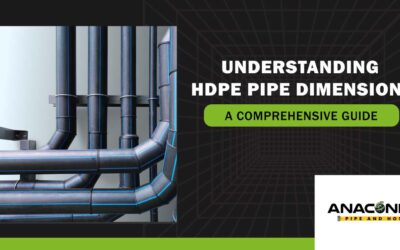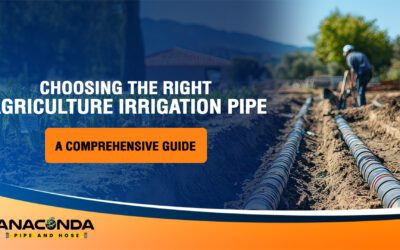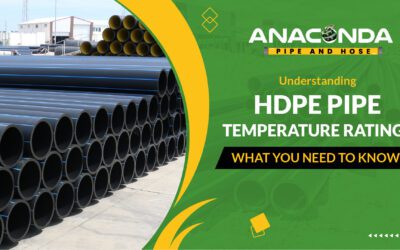HDPE Drill Cutting Pipe: Built To Last
During oil well drilling operations, boreholes generate vast amounts of rock cuttings and liquid drilling mud. This material must be transported back to the surface efficiently and without leakage for appropriate disposal or reuse. However, the highly abrasive nature of drill cuttings often degrades steel and concrete gathering pipelines – leading to loss of production and serious environmental risks.
Advanced HDPE (high-density polyethylene) pipe provides oil wells with optimized drill cuttings transportation that’s leak-proof, clog-resistant, and durable in even the most aggressive environments.
The Drilling Detritus Dilemma
Drill-cutting transport systems have one essential duty – ferry the debris mixture of crushed rock, spent drilling mud, and other effluent from the downhole up to solids control equipment on the surface for processing and reuse.
For decades, rigs utilized cheaper steel and concrete pipelines. But their innate rigidity and seams made them prone to:
- External corrosion from chemical abrasion
- Leakage through displaced joints
- Inner wall erosion causing flow restrictions
Once cracks and wall deterioration start with older pipe forms, abrasive solids infiltration accelerates system damage. The resulting leaks and blockages require constant repairs, costing rigs countless hours of lost production and risking environmental issues and regulatory penalties.
Durable, Optimized HDPE Drill Cuttings Pipe Systems
Advanced fused HDPE pipe provides oil drilling operations with precisely engineered drill cuttings solutions:
- Smooth, non-stick inner walls prevent cuttings/solid buildup
- Flexible construction absorbs vibrations and ground movement
- Fusion-welded joints eliminate potential leakage points
- High chemical and external corrosion resistance
Combined, these attributes mean HDPE drill cutting pipes maintain:
Reliable Open Bore Transport
Lacking joints or crevices for debris accumulation, smooth HDPE walls maintain unrestricted flow for 20+ years despite ongoing abrasion.
No Inner Erosion
The slick, non-stick surface rejects adhesion from abrasive drill solids flowing through – preventing gradual transport capacity declines.
Leak & Rupture Proofed
Welded HDPE joints form a seamless pipeline without weak points prone to separation or cracking under pressure spikes or shifts.
Immune to Wear & Tear
Impervious to chemical or mechanical corrosion, HDPE retains reliable function across decades of service in harsh downhole environments.
Simplified Installation
Available in custom lengths up to 50ft, HDPE drill cutting pipes require fewer field joints and adjustment than rigid steel or concrete.
Boosted Efficiency
By optimizing cutting transport, HDPE piping systems help rigs reduce cleaning/maintenance costs and maximize sustainable use of recycled drilling fluid volumes.
Environmental Assurance
HDPE’s fused, non-leak architecture assures drillers that effluent moves safely from source to processing without discharge.
The Pipe of the Future, Today
Drill-cutting transport forms the critical connection between efficient subsurface operations and productive solids handling above ground. By investing in engineering excellence rather than outdated cost-savings, modern rigs are future-proofing with resilient HDPE pipe networks that deliver optimized performance for decades while eliminating leakage risks.
While old steel gathering lines languish, HDPE is the superior choice for smoothly and reliably conveying high volumes of abrasive detritus around the clock in even the most rugged downhole environments.
Using new high-density HDPE pipe systems technology provides a breakthrough solution for old problems during drilling operations, and the main one is how to transport the cuttings. Historically, steel and concrete pipelines have been used for this purpose. Still, these materials’ vulnerability to corrosion, leaks, and inner degradation has been an expensive source of operational downfalls and emergencies.
HDPE pipes avoid the above problems as their smooth interiors are non-stick and do not allow the buildup of sludge and solids, ensuring continuous flow over a long period. Another advantage of HDPE drill cuttings pipe construction is its flexibility, enabling the pipe system to survive despite vibrations and ground movements, reducing the risk of damage due to environmental or geological shifts.
In contrast, high chemical and external corrosion resistance ensures that the integrity of the transport system is intact even in the most severe downhole environment. Furthermore, HDPE pipes reduce the installation and field joint preparation and expense when compared to rigid alternatives, saving time and reducing system maintenance costs because they are delivered to the site in customized lengths of up to 50 feet.
HDPE drill cuttings piping does this from an operation standpoint, reducing the first cutting transportation, increasing efficiency, and maximizing the green use of recycled drilling fluids. The downtime for cleaning and maintenance can be reduced to ensure the rigs work better, improving productivity and profitability.
Heat-fused and quick disconnect-equipped HDPE pipe systems guarantee the safe transportation of effluents from their point of generation to the processing facility, eliminating the possibility of discharge; this gives confidence to drillers and regulatory authorities alike. HDPE will lead the way for future drill-cutting transportation in oil well drilling operations, providing advanced technology that makes operations adaptable for years with proven optimal performance and environmental stewardship.






0 Comments